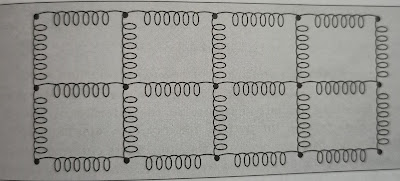Photoelectric effect
Photoelectric effect:
when light is incident on a metal surface then electrons are emitted from it. This phenomena is called photoelectric effect.The emitted electrons are called photoelectrons.

Laws of photoelectric emissions:
1. The emission of photo-electrons takes place only when the frequency of incident radiation is above certain critical value of that metal.This critical value is called threshold frequency.
2.The emission of photo-electrons starts as soon as the light falls on metal surface i.e.the photoelectric emission is instantaneous.
3.The maximum kinetic energy with which the photo-electrons are emitted from a metal surface is independent of the intensity of the light and only depends upon the frequency.
4.For a given frequency, the number of photo-electrons emitted is directly proportional to the intensity of incident light.
5.The energy distribution of the photo-electron is independent of the intensity of the incident light.
=(1/2).m9^2 maxExperimental study of photoelectric effect:
In 1900 Lenard studied the photoelectric effect experimentally . In the given fig. shows experimental arrangement used to study the photo electric effect.
The apparatus consists of an evacuated glass tube and fitted with two electrodes.The electrodes P is a photosensitive plate called emitting electrode and others electrode C is called collecting electrode. A varying potential difference can be applied across two electrodes with a high tension battery B connected to resistance L , the mid point of which is earthed so that plate p is at zero potential . The collector can be maintained at a desired positive or negative potential with respect to collector C .The potential difference between the electrodes is measured with voltmeter V and photoelectric current in the circuit is measured by micro-ammeter A.when a suitable radiation is incident on photosensitive plate P, electrons are ejected from it.The electrons ,which have sufficient kinetic energy ,reach the electrode C despite its negative polarity.The potential difference between the two electrodes acts as the retarding potential.As the collecting electrode is made more and more negative,fewer and fewer electrons will reach the cathode and photoelectric current recorded by ammeter will fall. in case the retarding potential equals Vo called the stopping potential, no electron will reach the cathode and current will become zero. In such a case , the work done by stopping potential is equal to the maximum kinetic energy of the electrons i.e.
eVo
eVo
As charge on electron e is constant
Vo ∝
1/2m9^2max
Thus stopping potential gives the estimate of maximum kinetic energy with which photoelectrons are emitted.



Comments
Post a Comment